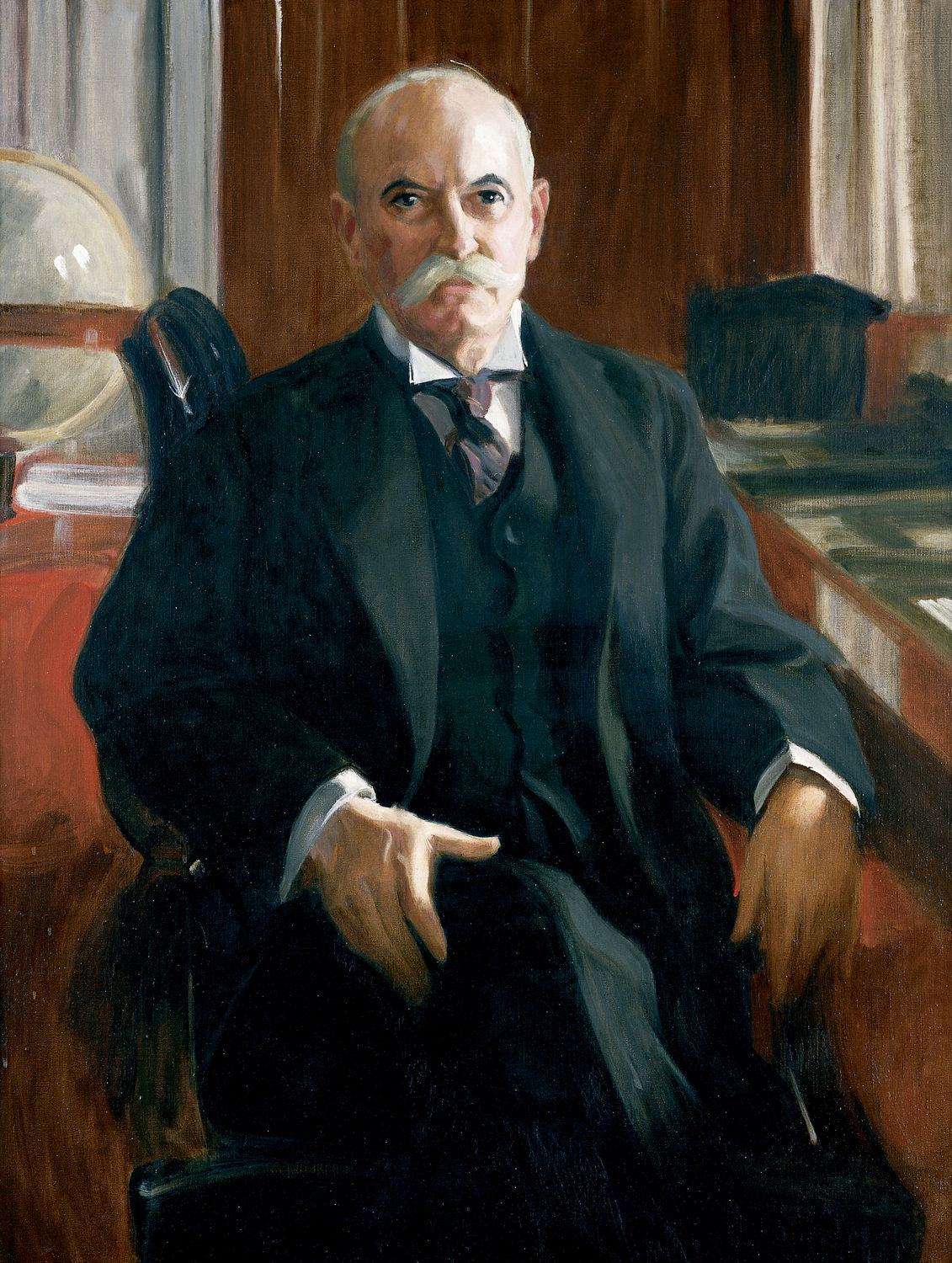
| Title | Nelson Aldrich |
| Artist/Maker | Paul
Peter
Kiehart
(
1913
-
2003
)
|
| Date | 1976 |
| Medium | Oil on canvas |
| Dimensions | Sight: h. 44.875 x w. 34 in. (h. 113.9825 x w. 86.36 cm)
Framed: h. 50.25 x w. 44 in. (h. 127.635 x w. 111.76 cm) |
| Credit Line | U.S. Senate Collection |
| Accession Number | 32.00020.000 |
Vice President Nelson Rockefeller commissioned artist Paul Kiehart to make a copy of his favorite portrait of his grandfather and namesake, Nelson Aldrich, for donation to the U.S. Senate Collection. Executed in 1976, the picture replicates a 1911 life portrait by the Swedish painter Anders Zorn; the original belongs to the National Trust for Historic Preservation and hangs at Kykuit, the Rockefeller family home in Pocantico Hills, New York. Zorn’s other portrait works include philanthropist Andrew Carnegie, located at the Carnegie Institute in Pennsylvania; First Lady Frances Folsom Cleveland, on display at the Isabella Stewart Gardner Museum in Boston; and President William Howard Taft, in the White House collection.
Born in Pennsylvania, Kiehart studied at the Pratt Institute and the Art Students League in New York before conducting an apprenticeship in conservation. Primarily a restorer of paintings, Kiehart conserved a number of pieces in the Samuel H. Kress Collection. This collection was eventually donated to institutions throughout the country, with the largest portion going to the National Gallery of Art in Washington, D.C.
During his career, Kiehart was commissioned to copy many portraits. In 1986 he was asked to execute a portrait of West Point Superintendent Major General Richard Delafield after an oil-on-canvas painting by Henry Peters Gray in the United States Military Academy Collection. The cadet class of 1981 donated the Kiehart painting to West Point, where it is now on display.
Nelson Wilmarth Aldrich, a U.S. representative and senator from Rhode Island, defended business interests throughout his political career. Born in Foster, Rhode Island, Aldrich was elected as a Republican to the U.S. House of Representatives in 1878 and entered the U.S. Senate in 1881. In the late 1890s, Aldrich assumed a key role as one of "The Senate Four"—Aldrich, William Allison of Iowa, Orville Platt of Connecticut, and John Spooner of Wisconsin—who dominated the Senate for a decade.
As chairman of the Senate Finance Committee, Aldrich presided over tariff legislation at a time when tariffs provided the federal government's principal source of income. He coauthored the Payne-Aldrich Tariff Act of 1909, which raised tariff rates on many imports and stirred protests from progressive reformers. In the wake of the Panic of 1907, he sponsored the Aldrich-Vreeland Act, permitting the U.S. Treasury to lend currency to banks during fiscal crises.
In his final Senate years, Aldrich chaired the National Monetary Commission. His Aldrich Plan, providing for flexible cash reserves, was the forerunner of the Federal Reserve System. A powerful floor leader, Aldrich played a major part in shaping the legislative programs of the administrations of both Theodore Roosevelt and William Howard Taft.
After serving in the Senate from 1881 until 1911, Aldrich retired to Providence, Rhode Island. He died in 1915 in New York City. Aldrich's grandson, Nelson Aldrich Rockefeller, served as vice president of the United States from 1974 to 1977, and his great-grandson, John D. Rockefeller IV, took his oath as a U.S. senator from West Virginia in 1985.